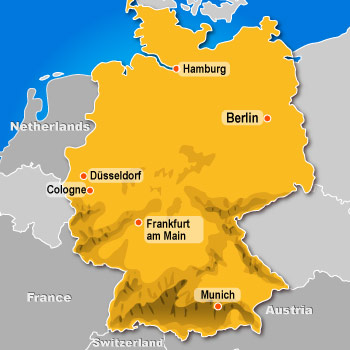Unconventional tours lay bare Hamburg's red-light district
 Hamburg - St Pauli stopped being simply sleazy a good while ago. Gone are the days of the Reeperbahn - the main drag in Hamburg's famous red-light and entertainment district - being strewn with sailors carousing till dawn, listing with beer-ballasted bellies and seldom going to bed alone.
Hamburg - St Pauli stopped being simply sleazy a good while ago. Gone are the days of the Reeperbahn - the main drag in Hamburg's famous red-light and entertainment district - being strewn with sailors carousing till dawn, listing with beer-ballasted bellies and seldom going to bed alone.
The "geile Meile" (loosely translated: "randy road"), as German rocker and Hamburg resident Udo Lindenberg once dubbed the Reeperbahn in song, is one of the port city's top tourist attractions. And the best way for newcomers to get acquainted with the Reeperbahn and St Pauli district is to join one of the many guided tours on offer.
Some of the tours are rather unconventional, including those by a nonprofit group calling itself the Kurverwaltung St Pauli ("St Pauli Health Resort Administration"). They take you down the Reeperbahn, past the Panoptikum waxworks museum, the landmark Schmidt Theatre and the famous Davidwache police station.
Then there is the Historic Whore Tour. Yet another is Olivia's Safari, led by Olivia Jones, who has achieved notoriety as "Germany's best-known drag queen." Jones, who was born as Oliver Knoebel, need not worry about one of his charges losing sight of him in a crowd. Well over six feet tall and sporting a red miniskirt and knee-high red patent leather boots - with a matching heart-shaped handbag - Jones is conspicuous even by the Reeperbahn's demanding standards.
Jones meets his tour group this day at the Reeperbahn's Beatles-Platz. The square is directly in front of the new Beatlemania museum, which is dedicated to the legendary British rock-and-roll band's early years in Hamburg. The square has been made to look like a giant black vinyl record.
Off to one side of the square stand metal silhouettes of the four Beatles. They had gigs right around the corner, in Indra and the Star Club, where other top rock-and-roll bands played in the 1960s.
Jones' tour has to do with music only marginally, though. "We're about to have a nice tour of the red-light district, dears," he announces. The first stop is Grosse Freiheit ("Big Freedom"), a famous side street off the Reeperbahn. It is especially lively on Friday and Saturday nights, when throngs of visitors jostle past places like Dollhouse - "one of the best table-dance clubs," Jones remarks.
Another notable establishment is Safari, long (in)famous for its live sex shows. "There are places here where a glass of orange juice costs 75 euros," Jones warns. "So you'd better check the price list before ordering."
But there are also plenty of conventional pubs, and music clubs such as Grosse Freiheit 36 and Gruenspan that attract a lot of foreign bands, too. For karaoke fans, Jones recommends Thai Oase.
Amusement is writ large on the street that gained fame in the World War II-era film "Grosse Freiheit Nr. 7," which starred popular Hamburg-born actor Hans Albers. Nevertheless, Jones' tour does not fail to take in St Joseph's Catholic Church, too, which stands serenely in the middle of the teeming red-light district.
Not far from the church is a Salvation Army office. Around the corner, an ambulance has just pulled up in front of Eros Laufhaus, a four-storey brothel.
Jones struts ahead of his group through the spread legs of a woman painted on the entrance of the Ritze ("Slit") pub. The walls inside are covered with photos of celebrities who have been there. Ritze was, and is, a popular spot for boxing fans. It has a boxing ring in the basement, where temperatures are so high that you sweat standing still. Jones lets his group watch two boxers sparring. Bulging with powerful upper arms, they bounce around the canvas and pummel each other with right hooks.
Back outside, the sightseers' eyes reaccustom themselves to daylight. Jones takes his group down the Reeperbahn to Pulverfass Cabaret - "the best drag show in Germany," he says knowingly - and then to a shoe store with a selection of somewhat outre models, including footwear that men cannot imagine women could walk around in.
A must on any St Pauli tour is Hans-Albers-Platz. The square, near the Reeperbahn, commemorates the actor with a sculpture by the recently deceased German artist Joerg Immendorff. In the 1940s, Albers celebrated St Pauli in the ever popular song "Auf der Reeperbahn nachts um halb eins" ("On the Reeperbahn at twelve-thirty am"). In his depiction, the district is more warped than wonderful - he got it right. (dpa)